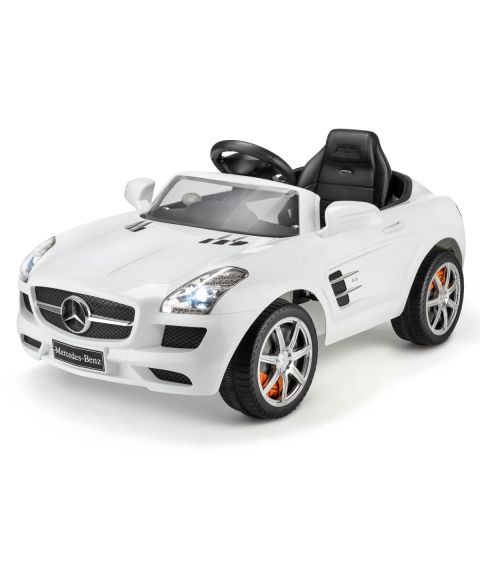Recommended Info For Selecting Remote Control Childrens Cars
Recommended Info For Selecting Remote Control Childrens Cars
Blog Article
What Do I Need To Know About Battery Life And Charging Times Of An Electric Ride-On Children's Car?
Understanding the battery's time and the life span of a kid's electric car is crucial to make sure your child enjoys a fun and safe ride. Here's everything you must be aware of - Battery type -
The majority of electric ride-on vehicles designed for children are powered by rechargeable batteries. They typically are lithium-ion or lead-acid batteries. Lead-acid batteries take longer to charge and have lower battery lifespan.
Battery Capacity -
The capacity of the battery can be measured in either amps-hours or watts. High capacity batteries allow for longer playtime, without needing recharge.
Run Time -
This is the length of time an electric ride-on will run for after one charge. It is contingent on a variety of factors such as battery capacity and motor speed, as well as the terrain, and the weight of the rider.
The typical run time for electric ride-on cars range from 30 minutes to two hours on a single charge. However, some high-capacity batteries may offer longer time-to-run.
Charging time -
The charging time is how it takes for the battery to fully recharge once it's been depleted. The charging time can differ based on the capacity of the battery, specifications for the charger and the charging method.
Charge times for electric ride on cars are typically between 8-12 hours. Nevertheless, some models can have faster charging times, especially if using lithium-ion batteries.
Follow the charging instructions given by the manufacturer to ensure safety of the battery and longevity. The performance of the battery and its longevity could be affected negatively by either overcharging it or undercharging it.
Charge Methods -
Most electric ride-on cars come with a charging cord which plugs directly into the outlet of your home. Some models come with fast-charging features or a smart charger which examines the status of the battery, and then adjusts the charging rate accordingly.
To ensure that there is no damage to the battery or electrical system make sure that the charger and port are compatible with chargers provided in your ride-on car.
Additional Batteries
Some electric ride-on vehicles may permit you to purchase additional batteries or spares to extend your playing time. If you have extra batteries on-hand, you can easily swap out the ones that are depleted for fully charged ones to minimize downtime.
Knowing the battery's charge time of a ride-on kid's car will help ensure that both you and your child have fun, uninterrupted playtime and exciting adventures. The life and performance of the battery can be improved by regularly charging the batteries and following proper charging methods. Check out the most popular electric kids cars for more advice including a toy car, a toy car, cars pedal car, ride a toy, childrens digger, car on ride, two seater electric cars, kiddies cars, car electric ride on, electric ride along car and more. . 
How Can Kids Car Models Be Used Indoors And Outdoors?
In the indoors or outdoors, kids automobiles are designed to work in various situations and environments. The models are made differently for indoor use. Use Cars
Dimension and weight The majority of indoor cars are smaller and lighter in order for them to fit in small spaces such as bedrooms, living spaces, and hallways. They can navigate through tight spaces and narrow passages with ease.
Low Ground Clearance for Indoor Use cars have a lower ground clearances to avoid being stuck or caught on obstructions such as rugs, carpets, or thresholds. This allows for smooth, free motion across indoor surfaces.
Smooth WheelsIndoor-use cars The wheels are usually constructed from smooth materials like rubber or plastic for an even traction on surfaces with a smooth surface, like laminate flooring or tile. The wheels are made to cut down on noise and keep from scratching or scuffing surfaces.
Limited Speed - Indoor use cars usually have slower maximum speeds to make sure that they are safe and secure within tight areas. This helps prevent collisions and accidents with furniture like walls or obstructions found inside.
Outdoor Use Cars -
Durable Construction: Cars built for outdoor use are made of robust materials such as tough plastic or metal that can withstand rough handling, elements of the outdoors such as humidity and sunlight. The cars are resistant to damage caused by outdoor elements.
Higher Ground Clearance - For outdoor use, vehicles have greater ground clearance to maneuver through bumps, uneven terrain or obstacles found in the outdoors. They can now navigate rough surfaces including pavement as well as gravel and grass.
Traction Tires -- The tires that are used on vehicles that are outdoors usually include treads or patterns that are designed to improve the grip and traction of vehicles on roads that are slippery or uneven. This provides better control and stability when driving on terrains that are outdoor.
Weather Resistance - For outdoor use, cars may feature components that are resistant to damage from environmental elements or moisture like sealed electronics and waterproof casings. They are able to stand up to the elements of rain, mud, or puddles and still perform.
Outdoor cars tend to be more efficient to handle the vast open spaces and the longer distances you can expect to travel in. This may provide an thrilling and exciting riding experience for children who are exploring the outdoors.
Parents can pick a car for their children that suits their needs, indoors or out, by considering the design and features. This will ensure the safety, enjoyment and lasting play experience. Follow the most popular JCB ride on digger for blog advice including a toy car, digger ride, pedal car, ride electric car, ride on digger, cars pedal car, toy car toy car, toy the car, toy in car, electric two seater cars and more. . 
What Are The Alternatives For Remote-Controlled Childrens Vehicles? What Are The Benefits And Disadvantages?
Remote control children's cars are also known as remote controlled vehicles or RCs. They are available in a range of designs, prices and sizes that will suit any budget and taste. The pros and cons, and the dimensions styles, models, and costs of remote-controlled vehicles for children are listed below.
Electric RC Cars – These are battery-powered, remote-controlled vehicles which can be used indoors and out. The cars come in different styles such as trucks or buggies.
Nitro RC Cars – Gas RC cars that have faster speeds and better performance. However, they require a greater amount of expertise and maintenance to run. These cars are usually larger and are more expensive than electric RC cars.
Scale Models are remote controlled replicas that include cars, trucks and airplanes. Scale model sizes range between 1-10 and 1--24. The larger models provide greater quality and greater realistic.
Sizes -
The dimensions of remote-controlled cars for children range from tiny miniature versions to larger-scale replicas. Size can influence the performance of a vehicle as well as its speed and its handling characteristics.
Micro-sized cars that are light and compact, are perfect for use indoors and by younger children. The larger cars offer more performance and endurance, making them ideal for off-roading or racing.
Prices
Prices vary based on size, features brand and build quality.
The RC cars that are small-sized and electric vary from $20 to $100 The larger-scale nitro and electric cars are available from $100 to $500 or more.
Models and top-of-the-line hobby RC cars cost from several hundred dollars to over 1000 dollars, depending upon the level of detail.
What are the pros and cons?
Pros -
Children and adults can enjoy the excitement and fun of remote-controlled vehicles.
Skills Development The use of RC vehicles aids in the development of hand-eye coordination, spatial awareness and problem-solving skills.
Social Interaction: RC cars can be played by families and friends, promoting collaboration and social interaction.
Customization – Many RC car models can be modified with aftermarket parts or upgrades to enhance performance and look.
Cons -
Cost - High-end models with advanced features, like hobby-grade cars, can be quite expensive.
Learning Curve - Operating an RC vehicle requires a lot of practice and skill, and even younger kids may have difficulty with the controls in the beginning.
Maintenance It is important to maintain the vehicle regularly for cars with RC engines, such as cleaning, lubrication and repairs.
Safety Issues RC automobiles pose a security risk and could lead to electrocution, collisions and falls if used without adult supervision.
Overall, remote control children's cars provide an exciting and educational experience for children of all ages. However, it is important to take into consideration factors such as dimensions, cost features, and safety when selecting the appropriate model for your child. These RCs are suitable for teenagers and older children, while simpler models will suit younger children and beginners. Read the recommended electric kids cars kidscars.co.uk advice for website info including toy car, kidscars, ride on digger, ride electric car, electric ride on, riding digger, childrens digger, electric ride along car, electric ride along car, toy in car and more. .